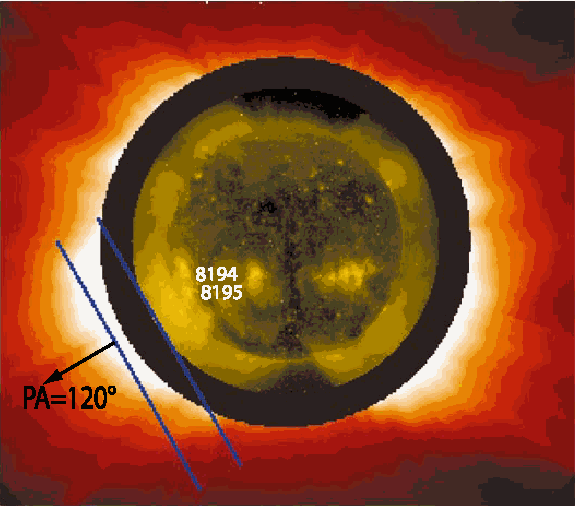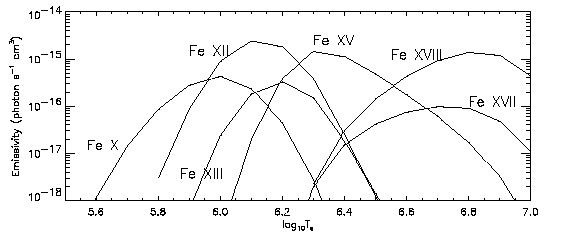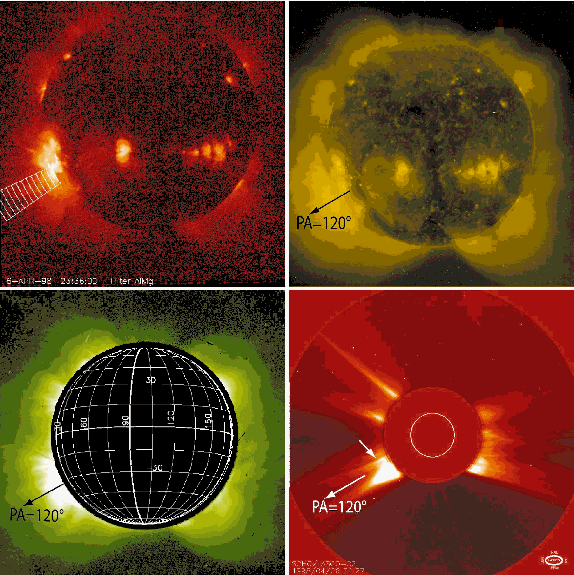
This science nugget is the second of the highlights from the Yohkoh 10th anniversary meeting
Spectra from the high corona
The work reported here, based on a presentation by Kuen Ko, of the Harvard-Smithsonian Center for Astrophysics, combines Yohkoh data with data from the UVCS on board SOHO, a spectroscopy instrument we've never done a Yohkoh science nugget about. Since one generally never understands the physics until one does spectroscopy, it is high time. Here's the observational situation:


One gets a broader view of the observational situation by looking at the four panels below, which show various images (Yohkoh upper left, large-scale corona lower right; this kind of image defines "streamer" observationally, and one can see several here):

Why observe these spectra?
At the southeast (lower left) limb of the Sun, at this time (April 6-7, 1998), we find two active regions and a small streamer above them. Right away this gets interesting, because the physical nature of a streamer remains a bit confusing. Often one does not think of streamers coming from active regions, but here you are; now that you see one, the question is how to relate it to the "ballerina's skirt" description of the heliospheric current sheet. This paper does not solve that problem, but in the course of study it has done something very nice for the Yohkoh soft X-ray telescope SXT. It has allowed us to confirm its temperature calibrations and make progress in understanding how the abundances of the elements affect this key matter. A bit technical, but vital.
To understand why this is important: SXT observes high-temperature plasmas as direct images through broad-band filters. These smear together many spectral features of many elements, and so somewhat surprisingly we need rather complicated theory to be able to understand the observations, not a good situation. The theory involves atomic physics, plasma physics, and in a remote sense nucleosynthesis. More exactly, the abundances of the different elements determine the signal that SXT detects, and these abundances have interesting variability. The FIP effect is one of the kinds of vitally interesting variability. Beware of other kinds of FIP!
So, how well is
SXT.
calibrated?
Quite well, it turns out, by astronomical standards! Here's the variation of emission measure with height (see the images above); emission measure indicates how much material is present.

H. Hudson (hudson@isass1.solar.isas.ac.jp), with thanks to Kuen Ko.